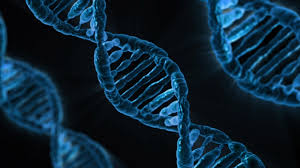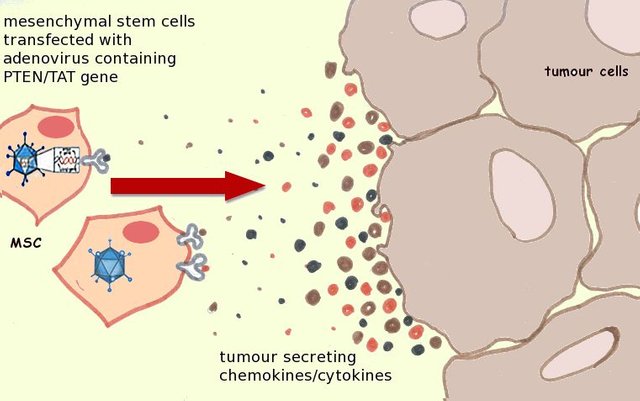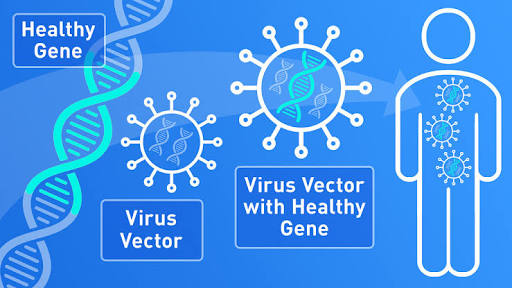GENE THERAPY- modifying the human DNA
.jpeg)
from pixabay under the cco license
In the past centuries, certain things were considered impossible, but today, such things are the norms of daily activities. Technology has advanced, and so has science, and this has resulted in the evolvement of various forms of modern approach towards the elimination of life threatening diseases that have no known cure.
An outstanding example is the application of GENE THERAPY, whereby the DNA is modified.
It could be difficult, yes, but impossible, maybe not. Today, many evidences exist to prove the effectiveness of gene therapy.
To understand the concept of gene therapy, we need to first understand what a gene is
What is a gene?
Simply put, genes are set of instructions made up of DNA (deoxyribonucleic acid), a ribbon-like structure existing in form of chromosomes, we have 24 chromosomes in our body and each of these chromosomes contain thousands of genes. The genes produce proteins which make up the cell, they give instruction to the cell on a variety of activities which includes; our growth and development, our physical appearance. Our genes also assist in the repair of damaged cells and tissues.
Genes are inherited from parents, and there exist two copies of each gene present in the chromosomes, one from the father and the other from the mother.
Knowing what a gene is already, let’s then see what gene therapy is all about, why gene therapy could be needed in some cases, and how it is carried out.
What is gene therapy?
Gene therapy, also known as gene transfer involves putting a functioning copy of a gene into specific cells in the human body which Is aimed at eliminating certain malfunctions in the body, or to completely replace a faulty gene.
It could either involve substituting faulty genes with healthy ones, or adding new genes that were not present in the body in order to help fight harmful diseases, or it could involve completely deactivating faulty genes to prevent them from causing harm to the body. Each of these processes modifies the DNA.
When a gene is faulty, it is said to be mutated. These genes can lead to cells not working properly or growing abnormally. The DNA needs to undergo a modification to prevent mutated genes from causing further harm.
To modify the human DNA, the following conditions must be met;
- The condition of the patient must be well understood
- The particular gene responsible for the malfunction must be identified
- A functioning identical duplicate of the gene involved must be provided
- An efficient means of passing the functioning identical duplicate must be made available
What cases require gene therapy?
As noted earlier, the mutation of gene(s) calls for a gene therapy. When gene mutation occurs, it can result in a the growth of a new cancer in the body, or the spread of an existing one.
Over the years, gene therapy has also been used to successfully treat many immune deficiencies, some of which include; adenosine deaminase (ADA) deficiency, hereditary blindness, haemophilia, fat metabolism disorder, cancer, parkinson’s disease, amongst many others.
How is gene therapy done?
Passing a functioning duplicate of the gene could be very difficult and challenging because a gene will not function if it is transferred directly into the cell, so, a DNA molecule carrying genetic information from one organism to another, otherwise known as a vector, is used. The vector could be either stem cells or harmless viruses. Now let’s consider what is involved in the use of these vectors.
STEM CELLS
Stem cells are biological cells that can develop to produce other distinct types of stem cells and they are also able to split and produce several copies of the same type of stem cell. They have the ability to renew themselves through the process of cell division
Sources of stem cells in humans include; bone marrow, adipose tissue, and blood.
HOW ARE STEM CELLS USED FOR GENE THERAPY
In the laboratory, stem cells are controlled in a way that makes them receive new genes which in turn, changes their behaviour, they are first separated and made to multiply. The separation or isolation process can seem to be a very complex one because it requires a broad knowledge on what it takes for that cell to remain alive in vitro. This process is followed by the introduction of a remedial gene directly into the cells, these results in the modification of the cell, the modified cell is then returned into the human body by injecting it into the bloodstream allowing it to travel to where it is needed in the bone marrow automatically.

wikimedia commons under the cco license
VIRUSES
Harmless viruses such as retroviruses and adenoviruses are used to deliver gene into cells in the process of infecting the cells, the success in the delivery of the modified gene is followed by the production of a functional protein. Retroviruses act to combine their genetic materials with the new gene and they incorporate it into a chromosome in the cell while adenoviruses do not incorporate their genetic materials into chromosomes, rather it is introduced into the nucleus of the cell.
The vector is introduced into the body of the patient by injecting it directly through the vein (intravenously) to the exact tissue where it would be taken up by each cells.
Another way is by exposing a part or snippet of the patient’s cell to the vector in the laboratory, thereafter, the modified cells are returned to the patient.
After the new gene has been injected into the harmless virus vector, a successful process will result in the production of a functional protein which will help to correct the defect that was being treated.
RISKS ASSOCIATED WITH GENE THERAPY
Although modifying the DNA has proved to be life saving, curing patients of sicknesses that have no other known treatment and removing inherited genetic disorders.
However, if not administered properly and if not done by a competent therapeutic agent, the following could occur
- Symptoms could be prolonged or worsened, resulting in adverse effect and a very complicated condition
- Stems cells introduced into the patient may exist for only a short period of time due to its inadequacy, resulting in only a partial treatment, and symptoms may return after a short while
- When treating genetic diseases, replacing faulty cells with healthy ones may lead to an attack on the other healthy cells present in the body
- The cell that is intended to be treated may completely resist the modification, or its response to the therapy may be insufficient
- If a new gene is introduced next to a gene that is involved in the growth of cells, this could gradually lead to the growth of a tumor
STRATEGIES INVOLVED IN GENE THERAPY
Today, there are more than a thousand different types of gene therapy. Gene therapy can be applied for any cell in the human body, but the therapeutic strategies and approach taken toward each cell is different
Presently, there are five main therapeutic strategies involved in gene therapy, they are:
ADDITION OF A NEW GENE: This involves adding a new identical duplicate of a gene into the cell which is aimed at making more of a particular protein. Gene addition is applied in cases of adenosine deaminase deficiency, haemophilia, congenital blindness, x-linked granulomatous disease, amongst many others.
CORRECTING THE FAULTY GENE: This involves the use of a gene editing technology to remove a faulty cell and replace it with a healthy one. This is aimed at producing a protein that doesn’t aggravate the disease but rather works to correct the defect. In the laboratory, gene correction has been used to extract HIV from the genome of a mice. In the clinic, gene correction has been used to remove from the human gene, the region that is responsible for huntington’s disease
SILENCING THE FAULTY GENE: This involves stopping the production of a particular protein by silencing the messenger RNA. In the process of gene silencing, the messanger RNA, which exists as a single strand is binded with a small sequence of RNA, thereby altering and making it exist as a double strand, in turn, the mRNA becomes destroyed. Silencing the gene is suitable in cases involving excessive production of a protein. For instance, in patients affected with rheumatoid arthritis, gene silencing reduces excessive tumor necrosis factor alpha levels
ELIMINATING THE CELL: This involves the killing of tumor cells or preventing a benign tumor cell from overgrowing. This is done by introducing suicide genes into the tumor cells, the suicide genes produces a drug in an inactive form which is then metabolised into a biologically active compound in the body, this in turn, cases the death of the tumor cell
REPROGRAMMING: This involves altering the features of a cell by adding one or more genes to that cell. For example, in type 1 diabetic patients, the cell producing insulin is damaged, but the cell producing the digestive enzyme is healthy, reprogramming the cell producing the digestive enzyme by adding to it a cell producing insulin will heal the patients.
CONCLUSION
Gene therapy is indeed a notable technique in preventing and eliminating a wide variety of ailments, ranging from inherited genetic disorders, to life threatening diseases that have no other known cure. Thanks to the advancement of science and technology.
However, much effort is still being taken towards research to make sure that the technique will be safe and effective. Presently, in clinics, this technique is only applied in cases of diseases having no other known cure.
MATERIAL REFERENCES
Gene
Gene therapy
Process involved in gene therapy
Stem cells
Various forms of gene therapy
Risks involved in gene therapy
If you write STEM (science, technology, engineering and mathematics) related posts, you can join #steemSTEM on discord. If you are from Nigeria, you may include the #stemng in your post. You can visit this blog by @stemng for more details.
.jpeg)
Gene is like the binary code that gives us our identity.
Nicely written, keep up the good work.
Exactly, our genes work as instructors, giving commands to our cells on what to do and what not to do. Thanks for reading
Congratulations @bookiie! You have completed some achievement on Steemit and have been rewarded with new badge(s) :
Click on any badge to view your own Board of Honor on SteemitBoard.
For more information about SteemitBoard, click here
If you no longer want to receive notifications, reply to this comment with the word
STOPGood work on this piece. I can see that you have put in a lot of work into this. Well I always love reading articles about DNA. And I love this. But has this medical advancement been tested in Nigeria?
Presently, there are no reports of gene therapy being tested in nigeria, for now, we have it in france, uk, japan, canada, india and a few other countries. Thanks for stopping by
Despite the fact that more and more rare diseases can now be treated with gene therapy, but we still need to figure out how to make it more affordable...
Because many people out there with rare diseases that could be treated in this way may never benefit from these therapies because they are too expensive for drug companies to develop, or too costly for the patient or health service to afford... We keep our fingers crossed tho.
Nice content... It's dope!
Yeah, it costs an arm and a leg.., i learnt it costs about 800,000 dollars to 1,000,000 dollars. That's an exorbitant sum of money, but just like you said, we keep our fingers crossed and hope things get better. Thanks for stopping by
That's just it ... You're welcome
I have always heard about Gene Gene gene!
But today i learnt the relationship between Gene abd DNA. Good job and well done.
I'm glad my post was of help😊, thanks for reading
This is awesome. I don't know much about biology related topics, this is an interesting read.
At least, I learnt gene mutation & it's correction through therapy... Well-done.